Do you have a green thumb? Are you looking for a new DIY project to keep you busy this weekend? If so, then you should consider learning how to make a rock garden! Rock gardens are a great way to show off your gardening skills, and they can be enjoyed by people of all ages. In this article, we will provide you with everything you need to know in order to create your very own rock garden. We will answer common questions, provide helpful tips, and offer some design ideas that will inspire you. Let’s get started!
What are Rock Gardens?
There are many benefits to having a rock garden. For one, they are low-maintenance since they do not require much watering or pruning. They are also drought-tolerant, which makes them ideal for areas with little rainfall. In addition, rock gardens can help control erosion on sloped terrain.
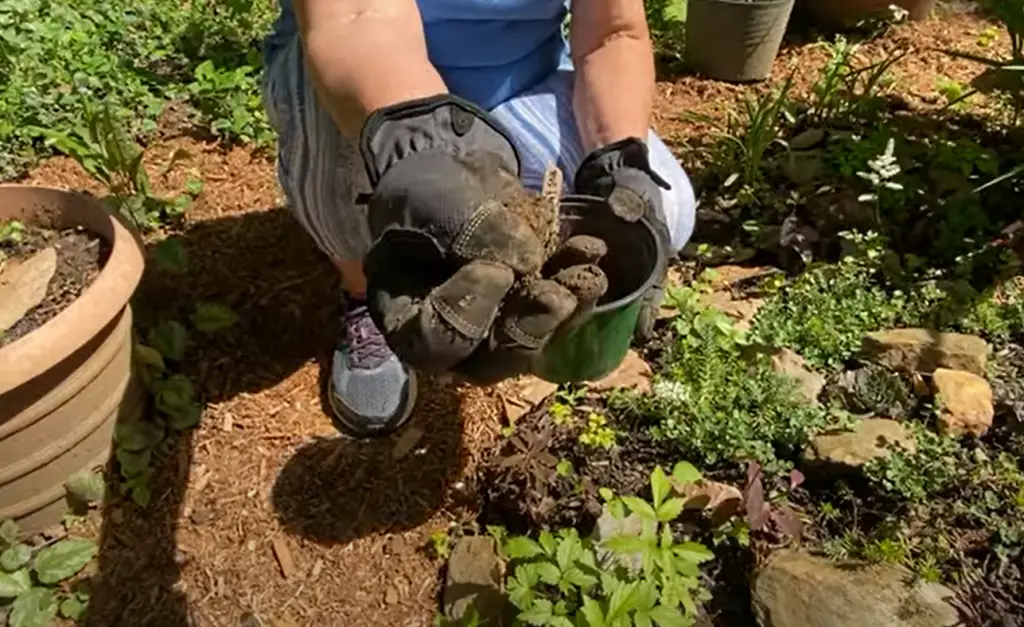
You probably heard about zen gardens and Japanese rock gardens. They are often created with raked gravel or sand, and sometimes include small trees, bushes, and stones. Zen gardens are meant to be a place of relaxation and contemplation.
Stone gardens can be designed using both stone and plants native to your region. This will give your garden a more natural look and feel. It is important to choose plants that are drought-tolerant and can withstand the heat of the sun, as well as those that will not grow too large for the space. [1]
Detailed Guide on How Do You Make a Rock Garden?
Now that you know the basics of what rock gardens are, it’s time to learn how to make one. This section will show you everything you need to get started, from choosing the right plants to designing and planting your garden.
Choose a location for your rock garden
The first step is to choose a location for your rock garden. It is important to choose a spot that gets at least six hours of sunlight per day. Once you have found the perfect location, mark off the area with string or painter’s tape. The area also should be well-draining, so if there is any concern about water pooling, you may need to build a raised bed.
Preparing the foundation
The next step is to prepare the foundation for your garden. If you are starting from scratch, you will need to clear the area of any grass or other vegetation. You can do this by hand with a hoe or spade, or use a power tool like a weed whacker or tiller.
Excavation
Next, you will need to excavate the area where you want your garden to be. This is especially important if you are starting with a blank slate and need to create a raised bed. Excavation is the process of digging up soil and rocks in order to create a space for your rock garden. This is necessary because most homes are built on top of soil that is not ideal for growing plants. The soil may be too dense, compacted, or full of clay. Excavation will loosen the soil and allow for better drainage. It will also give you a chance to mix in organic matter, such as compost, which will improve plant growth.
If you are working with an existing garden, you may not need to do any excavation. However, it is still a good idea to loosen the soil and add some organic matter, such as compost or manure. This will help improve drainage and give the plants a boost of nutrition.
To excavate the area, you will need a shovel. The size of the area will determine how long this process takes. A small garden can be excavated in a few hours, while a larger one may take a day or two.
Dig at least one foot (30 cm) deep, and if possible, two feet (60 cm). This will give the roots of your plants’ plenty of room to grow. If you are creating a raised bed, make sure the sides are sloped so that water can drain away from the plants.
Drainage set-up
Of course, one of the most important aspects of a rock garden is drainage. Without proper drainage, your plants will not be able to thrive. Waterlogged roots are susceptible to disease and rot, so it is essential that the soil drains well. There are a few different ways you can set up drainage for your rock garden.
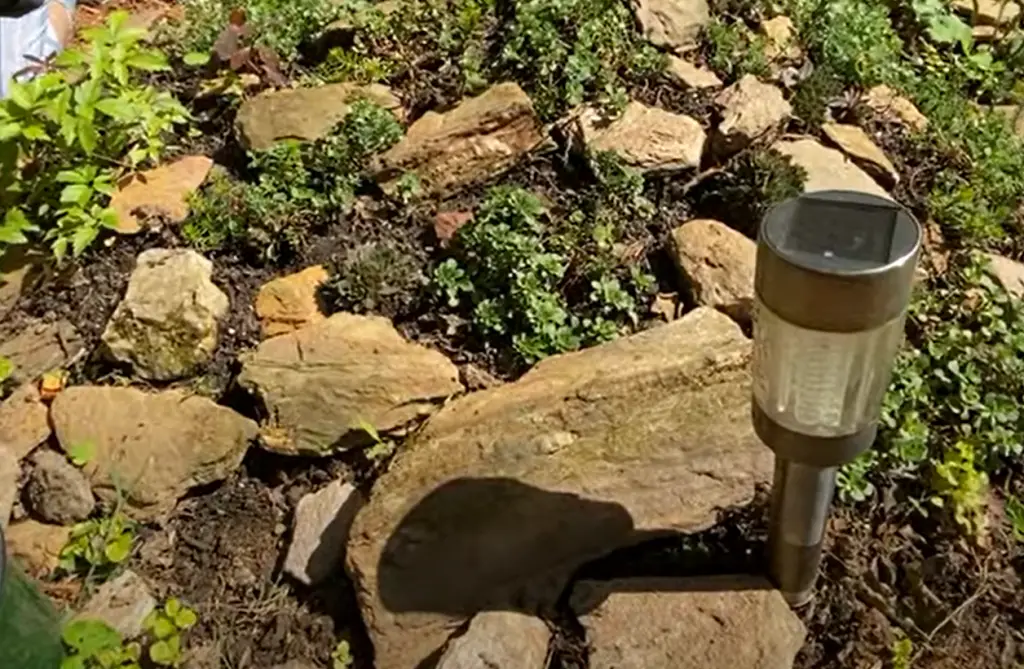
One option is to create a raised bed. This means excavating an area and adding soil until it is higher than the surrounding ground. Raised beds promote drainage because they allow water to flow away from the plants. They also protect against flooding and erosion.
Another option is to build a berm. A berm is a mound of earth that is built up around the perimeter of the garden. Berms help to catch and hold water, which can then be used to irrigate the plants. They also protect against erosion and flooding.
Place a drainage layer
Besides creating a raised bed or berm, you will also need to place a drainage layer at the bottom of the garden. This is a layer of material that will allow water to drain away from the roots of your plants. Good options for a drainage layer include gravel, sand, or perforated pipes.
Place a sand layer
The next step is to add a layer of sand. This will help with drainage and prevents the roots of your plants from becoming waterlogged. Use coarse sand, such as builder’s sand, rather than fine sand. Coarse sand has larger particles that allow water to drain away more easily. We suggest making a layer that’s at least 3 inches (7.5 cm) deep.
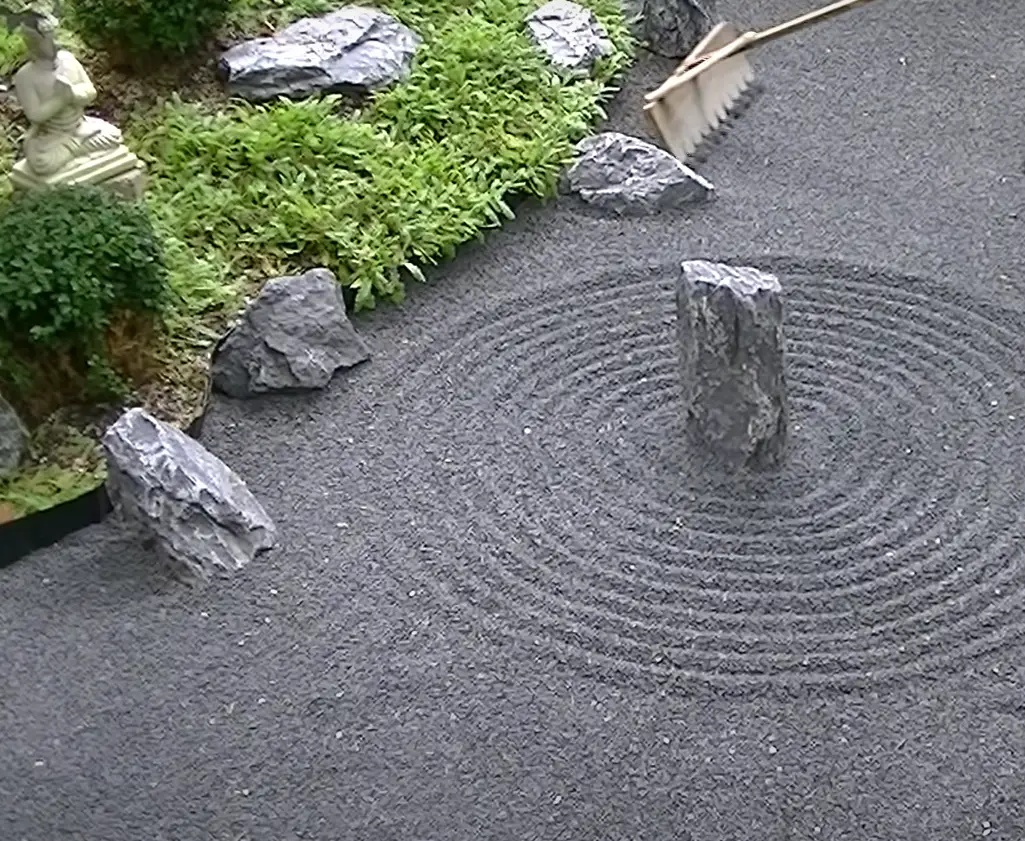
Place a soil layer
Now it’s time to add a soil layer. This is the layer where your plants will actually grow, so it’s important to choose the right type of soil. If you are growing cacti or succulents, use a well-draining cactus mix. For other plants, use a planting mix that contains compost. This will help improve drainage and provide nutrients for your plants.
Once you have added all the layers, it’s time to finish up. Add a layer of mulch to help retain moisture and prevent weeds from growing. Then, water the garden thoroughly so that the soil is evenly moist. Allow the water to drain away before adding plants. [1] [2]
Arranging the Design
Now that we finished the foundation of the garden, we need to start thinking about the design. This step is as important as the previous ones, because the right design will make your garden more beautiful and functional.
Choose rocks
Rocks are the main stars of the show in a rock garden, so it’s important to choose ones that are the right size, shape, and color. The rocks you choose will also depend on the plants you are growing. If you are growing cacti or succulents, use smaller rocks that will not shade the plants. For other plants, use larger rocks that will provide shelter from the wind.
When choosing rocks, pay attention to their shape. Rocks with smooth surfaces and rounded edges are best for rock gardens because they look natural. Steer clear of rocks with sharp edges, as these can be dangerous.
As for color, choose rocks that compliment the plants in your garden. For example, if you are growing green plants, use rocks that have a reddish or orange hue. If you are growing blue plants, use rocks that are gray or white.
If the rocks are particularly tall or large, you may want to dig them into the ground to make sure they are stable. Not only will it prevent them from tilting over, but also will make the overall design more cohesive.
Arrange the rocks
Once you have chosen the right rocks, it’s time to start arranging them in the garden. The first step is to place the largest rocks at the back of the garden. This will create a backdrop for the smaller rocks and plants in front.
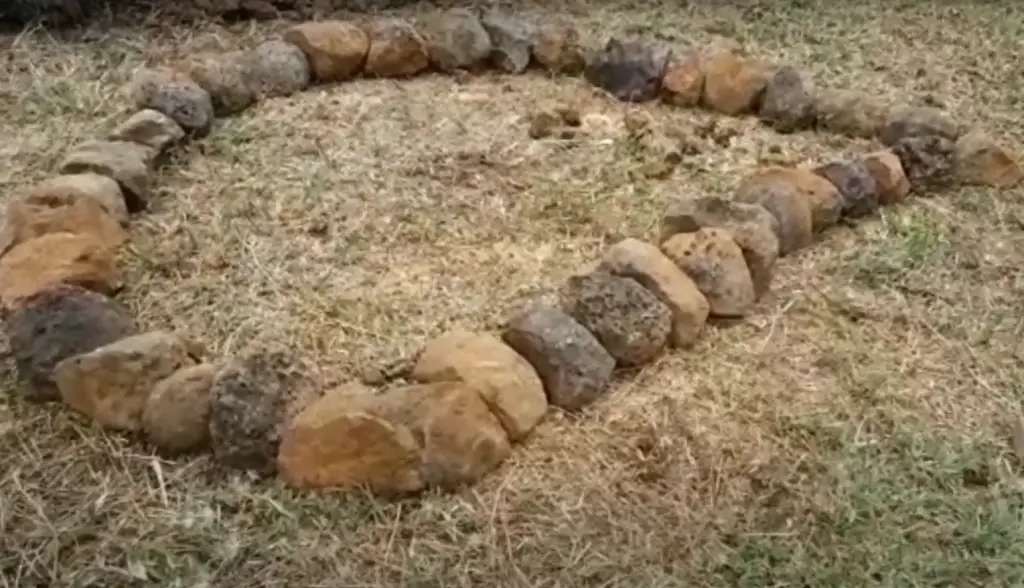
Next, place smaller rocks around the larger ones. Create gaps between the rocks so that you can insert plants later on. As you arrange the rocks, keep in mind how you want water to flow through the garden. You don’t want water to pool in any one area, so make sure there is adequate drainage.
Let the garden settle
Now that you have finished arranging the rocks, it’s time to let the garden settle. This means giving the rocks and soil time to compact so that they are less likely to shift in the future. Wait at least one week before planting anything in the garden.
In the meantime, you can start planning which plants you want to grow. When choosing plants, make sure they are appropriate for the climate and soil in your area. You also want to choose plants that will thrive in full sun or partial shade, depending on the location of your rock garden.
And, of course, color is important! Choose plants that will complement the rocks in your garden. By using different plants of different colors that complement each other well, you can create a beautiful and cohesive design. You may also want to go with plants that are small in size and have a slow growth rate. This way, they will not outgrow the space too quickly and will require less maintenance over time.
You may also want to look at some ideas for rock garden designs before you start planting. This will help you get an idea of what plants to choose and how to arrange them. You can find plenty of inspiration online or in gardening books.
It’s helpful to sketch out your design beforehand. This way, you can visualize the finished product and make changes as needed. Once you’re happy with the design, it’s time to start planting!
Planting the Garden
After the garden has settled, it’s time to start planting. When planting, make sure to dig holes that are wide enough and deep enough for the roots of the plants. Loosen the soil around the roots before placing the plant in the hole. Then, backfill the hole with soil and water well.
As you plant, keep in mind the arrangement of the rocks. You want to make sure the plants are spaced out evenly and that they complement the overall design. For example, if you have a rock that is tall and slender, you might want to plant a small shrub in front of it.
Once all of the plants are in place, add a layer of mulch around them. This will help retain moisture and keep weeds at bay. [1] [2] [3] [4]
Tips for Designing and Maintaining a Rock Garden
Now you should have a good idea of how to make a rock garden. But there are a few more things to keep in mind when designing yours. Following these will increase the chances of success and ensure that you end up with a garden that you love.
Keep it natural
The first tip is to keep the garden as natural looking as possible. This means using rocks that are similar in size and shape and arranging them in a way that looks like they could have been placed there by nature. Of course, you don’t have to use real rocks. You can also use concrete or stone pavers. Just make sure they look like they belong in the garden.
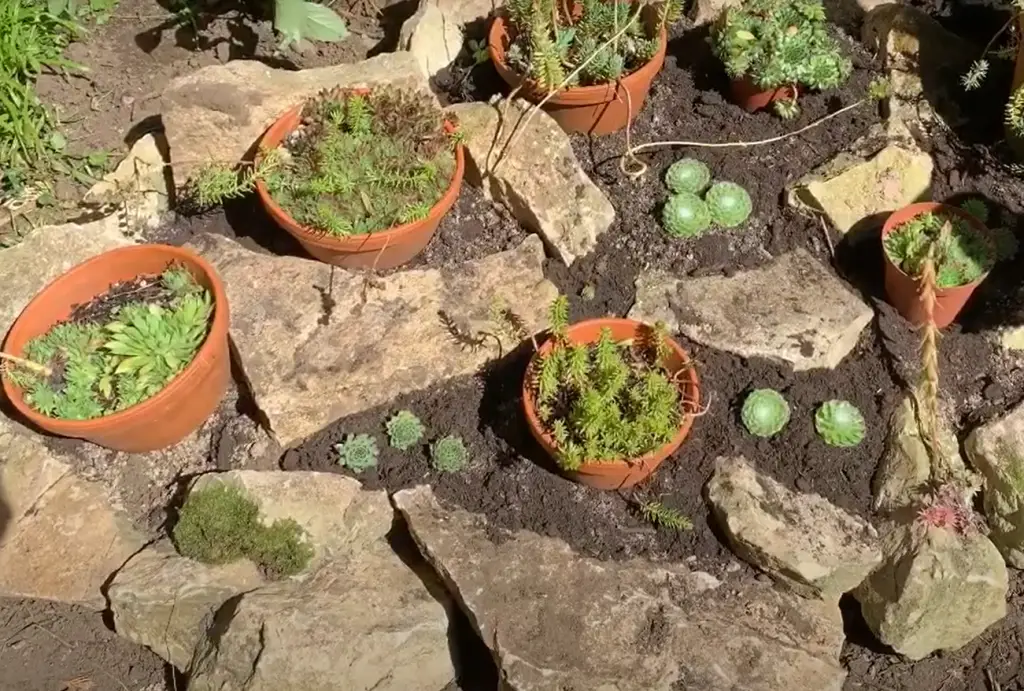
You may also create a small pond or waterfall in your garden. This will add a touch of tranquility and make the garden more enjoyable to spend time in. Just make sure the pond is big enough for the fish to swim around in and that it has a filter to keep the water clean.
Keep it simple
Another important tip is to keep the garden simple. This means avoiding too many different colors and types of plants. Stick to a limited palette so that the garden looks cohesive and well-designed. And don’t overcrowd the space with too many plants. A few well-chosen plants are all you need to create a beautiful rock garden.
Vary the rocks
One of the most important things to remember when designing a rock garden is to vary the rocks. Try to use rocks of different sizes, shapes, and colors! Not only does this create interest and visual appeal, but it also helps to break up the space so that the garden doesn’t look too uniform.
Another thing to keep in mind is texture. Rocks can have different textures, from smooth and polished to rough and jagged. Again, mixing up the textures will add interest and visual appeal to the garden.
Weed and prune your garden regularly
As with any garden, it’s important to weed and prune your rock garden on a regular basis. This will keep the plants healthy and looking their best. It’s also important to remove any dead or dying plants so that they don’t detract from the overall appearance of the garden.
Pruning also helps encourage new growth and keeps the plant healthy. It also helps control the size of the plant so that it doesn’t become too big for the space.
Fertilize your plants
Finally, don’t forget to fertilize your plants on a regular basis. This will help them stay healthy and promote growth. Choose a fertilizer that is specially formulated for the type of plants you chose for your garden. This will ensure that you are using the right amount of nutrients for the plants in your garden. [3] [4]
Choosing the Right Plants for Your Rock Garden
While rocks are the main focus of a rock garden, plants are what give it life. Without plants, a rock garden would just be a bunch of rocks. So choosing the right plants is essential to the success of your garden. We’ve already mentioned that you must only choose the plants native to your region. But with so many options, how do you decide which plants to choose? Here are a few ideas.
Succulents
We recommend succulents, cacti, and other drought-tolerant plants for rock gardens because they are easy to care for and don’t need a lot of water. Cacti and succulents come in all shapes and sizes, so you can find one to fit any spot in your garden. They also come in a wide range of colors, so you can add some contrast and interest to your garden with these plants.
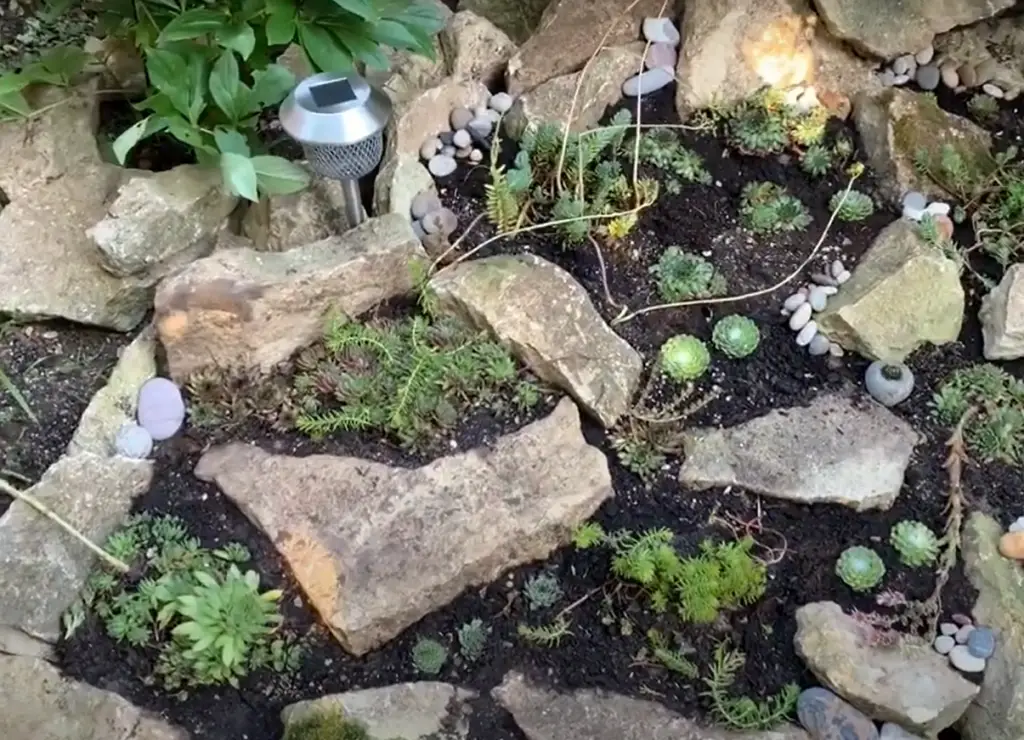
Annuals and perennials
If you live in an area with a long growing season, you can also grow annuals and perennials. Just make sure to deadhead the plants regularly to prevent them from getting too leggy. And they will complement the rocks and add color to the garden.
Some of our favorite annuals and perennials for rock gardens include:
- Sedum;
- Sempervivum;
- Echeveria;
- Portulaca;
- Alyssum;
- Rock Cress;
- Ice Plant;
Ferns
Ferns are another good option for rock gardens. They come in a variety of designs and can add texture to the garden. And like succulents, they don’t need a lot of water or fertilizer. Just be sure to give them some shade if you live in an area with hot summers.
Bulbs
Bulbs are an excellent choice for rock gardens. They don’t take up much space, they’re low maintenance, and they provide color and interest even when other plants are dormant. Good choices for bulbs include:
- Crocus;
- Daffodil;
- Iris;
- Tulip;
Yes, a rock garden can accommodate nearly all the same plants as a regular garden. The only exception being water-loving plants such as water lilies. But even then, there are some drought-tolerant water plants that would do well in a rock garden. [3] [4]
FAQ
How do you arrange rocks in a rock garden?
There is no definitive answer to this question, as the best way to arrange rocks in a rock garden depends on the overall aesthetic you are trying to achieve. However, some tips on how to arrange rocks in a rock garden include:
- Place larger rocks towards the back of the garden, and smaller rocks towards the front;
- Create clusters of rocks, rather than spreading them evenly throughout the space;
- Alternate between different types and sizes of rocks for visual interest;
- Use soft curves rather than sharp angles when arranging your rocks;
How do you make a decorative rock garden?
There are many ways to make a decorative rock garden. One way is to create a dry riverbed. This can be done by first finding a spot in your yard that has good drainage. Next, you will need to clear away any vegetation or organic matter in the area. Once the area is cleared, you will need to mark out the shape of your dry riverbed with string or chalk. Finally, you will need to fill the area with rocks of various sizes.
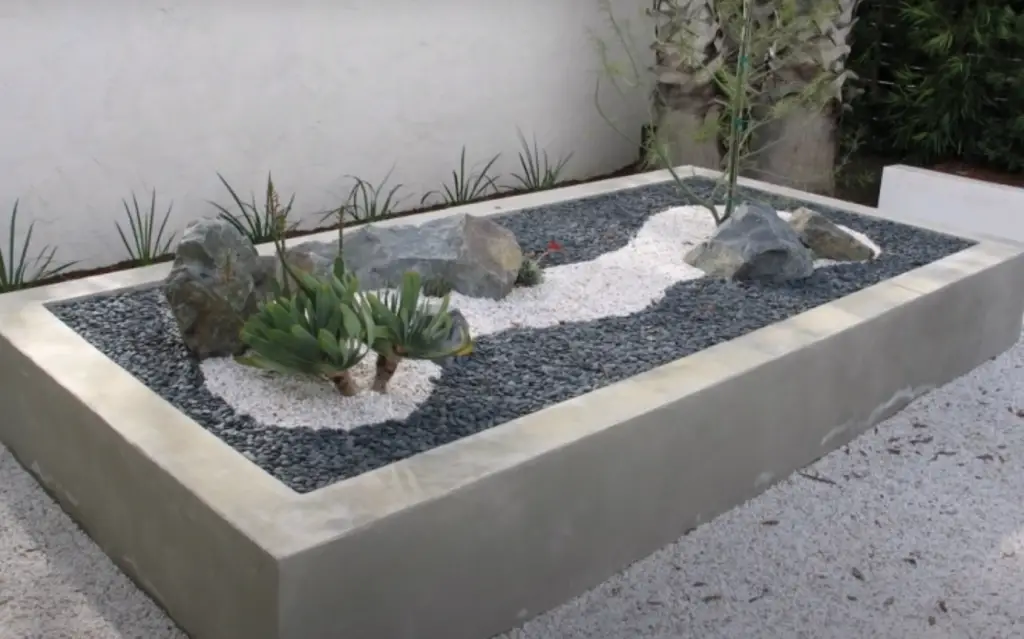
Another way to make a decorative rock garden is to create a Zen garden. This can be done by first finding a spot in your yard that gets good sunlight. Just like with the dry riverbed, you will need to clear the area. Once the area is cleared, you will need to start planning the design. In a Zen garden, the rocks are usually placed in patterns or grids. Finally, you will need to fill the area with sand or gravel.
What do you put in a rock garden?
The first thing you need to do when creating a rock garden is to choose the right plants. You’ll want to pick plants that are native to your region, and that will do well in the type of soil and climate you have. Once you’ve picked out your plants, it’s time to start arranging them in your garden.
One way to arrange plants in a rock garden is by grouping them together according to their water needs. For example, you might place all of the drought-tolerant plants together in one area, and all of the plants that need regular watering in another area. This will help you make sure that each plant gets the right amount of water, and that no plant is being overwatered or neglected.
How do you build a rock garden?
Building a rock garden is not as difficult as it may seem. With a little planning and the right materials, you can create a beautiful and low-maintenance landscape feature in your own yard.
Before anything, you will need to prepare the soil. If you have clay soil, it is important to amend it with sand and organic matter to improve drainage. Once your soil is ready, you can start laying out the rocks for your garden.
It is best to use larger rocks as the foundation of your garden and then fill in with smaller stones and gravel. When selecting rocks, be sure to choose ones that are native to your area. This will ensure that they are well-suited to your climate and will not require special care.
Once you have laid out the rocks, you can begin planting. Be sure to select plants that are also native to your area and that will thrive in the conditions of your rock garden. Succulents and other drought-tolerant plants are a good choice for most rock gardens.
Useful Video: Build a rock garden!
Conclusion
Making a rock garden is not as difficult as you may think. With a little planning and the right materials, you can easily create a beautiful and low-maintenance garden that will last for years to come.
In this article, we have covered everything you need to know about how to make a rock garden, including choosing the right location, preparing the soil, and selecting plants. We have also provided some helpful tips on maintenance and design.
We hope that this guide has been helpful and that you are now feeling confident about creating your own rock garden. Thanks for reading!
References:
- https://home.howstuffworks.com/lawn-garden/professional-landscaping/build-a-rock-garden.htm
- https://www.thespruce.com/how-to-build-rock-gardens-2132674
- https://www.gardeningetc.com/advice/how-to-build-a-rock-garden
- https://www.gardendesign.com/landscape-design/rock-gardens.html





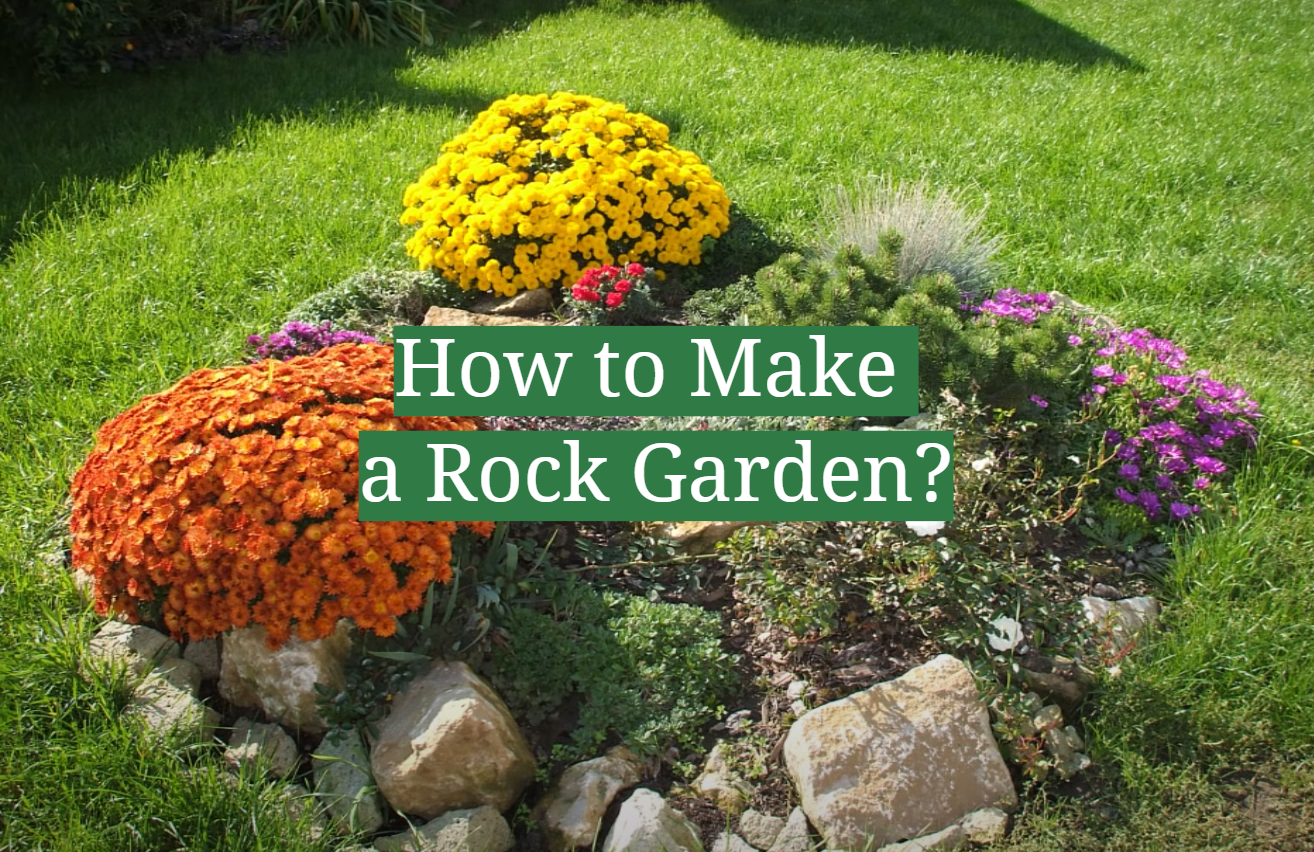




Leave a Reply
View Comments